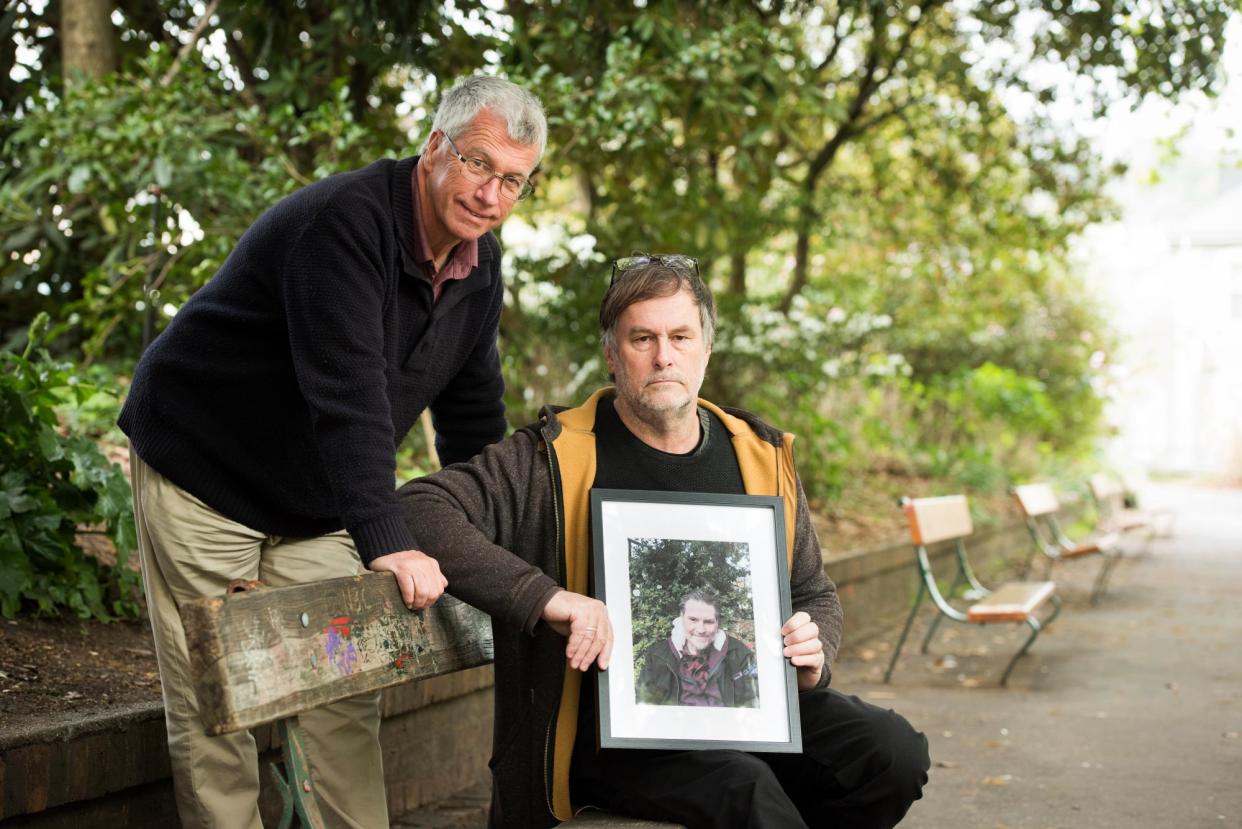Daniel Tommerup died 30 years too early when ‘all the hope in his eyes was gone’

The hope had gone from Daniel Tommerup’s eyes. That’s what Stephen Avery remembers most from the last time he saw his friend alive. Tommerup, 51, had been sleeping rough on the streets of Launceston for years. The bad days were too many to count.
Avery, a street chaplain working with the city’s homeless community, says Tommerup would regularly show up in the morning with black eyes, bruises and cuts, evidence of violence inflicted on him the night before.
“He really endeared himself to people,” Avery remembers. “But being on the streets, he was an alcoholic, he was very vulnerable. A lot of teenagers and young adults cruise Launceston, just looking for victims like Daniel to roll.
“So quite often in the morning, I’d find him and he’d tell me that he’d been bashed and had to go to hospital in an ambulance.”
Sometimes things spiralled out of control. Once Avery remembers Tommerup throwing his bedding out on to the road and running in front of traffic.
“He was just screaming and yelling, saying, ‘Who’s going to help me? Who’s going to support me? I just want to see my son’,” he says.
But this day, Avery recalls, was different.
He was driving past Brickfields Reserve, a leafy park near the city’s central business district, and saw Tommerup sitting there.
“He was just so depressed and morose and melancholy,” Avery says. “All the hope in his eyes was gone.
That night, Tommerup was drunk when he tried to light a fire on the street to cook meat outside Milton Hall, where he’d often slept.
He set fire to himself accidentally and, despite the efforts of passersby, sustained burns to 60% of his body.
The deaths of Australians experiencing homelessness are largely invisible. No government in the country attempts to count or understand what is driving them, putting us at odds with other western nations.
In an attempt to shine a light on this crisis, Guardian Australia has spent 12 months identifying and investigating 627 homelessness deaths.
The investigation involved analysis of more than a decade of non-public death reports to state and territory coroners, a review of inquest findings since 2010, and dozens of interviews with rough sleepers, victims’ families, researchers and advocates.
The Guardian has found that, on average, people experiencing homelessness are dying at an average age of 44. That is vastly premature and a life expectancy gap of more than three decades.
It is the first time the life expectancy gap has been measured at a national level and, despite the data’s limitations, the finding is broadly in line with studies in Perth and Sydney.
The investigation also found suicide and overdose, known as deaths of despair, are primary drivers of death. Researchers say such deaths are inextricably linked to the despair and hopelessness of homelessness.
The investigation identified a wide range of systemic failings contributing to deaths, including gaps in health and mental healthcare, the critical undersupply of public housing and failures of the justice system.
Avery remembers getting a call from the Hobart hospital where Tommerup was taken.
“They said he’s not got long to live and I said, ‘Can you tell him that I love him?’ And all this emotion came out. I was like, ‘What the heck is this?’ I just broke down.
“Daniel brought out that. He was a friend. He was someone you could talk to and you could share your soul with.”
The death hit another of Tommerup’s friends, Christopher Milne, particularly hard.
The pair had survived and slept rough on Launceston’s streets together. They were “thick as thieves one day, then needing space the next”, according to Avery.
Milne survived only for eight more months. He died in June 2022, having suffered a suspected cardiac episode.
His family say his health deteriorated due to exposure and that he was healthy and had never had a chronic illness before becoming homeless.
His mother, Margaret, spent two years begging social housing providers and homelessness services to find him accommodation.
Tommerup was 51 when he died. Milne was 50. They died almost 30 years earlier than they should have.
The premature nature of their deaths is all too common.
A Guardian Australia investigation, using an analysis of 627 homeless deaths over a decade, has shown the average age of death was 44.5, more than three decades earlier than the general population.
The cases are primarily driven by suicide and overdose and many are either preventable or directly connected to systemic failings across the housing, health and justice sectors.
Jeff McKinnon was the pastor at City Baptist church, which ran a drop-in centre for rough sleepers outside Milton Hall. Many of them, including Tommerup and Milne, used to sleep on the hall’s porch.
Related: Homeless Australians are dying at age 44 on average in hidden crisis
McKinnon says the chronic affordable housing shortage in Tasmania is driving a surge in homelessness. He has seen it first-hand.
“The sad thing is that there are so many people on the streets who haven’t particularly got mental illness,” McKinnon said. “They might have some minor issues. They’re not alcoholics, they just haven’t got anywhere to live.”
McKinnon held memorial services for Milne and Tommerup. Friends and family remembered Milne as a “gentle soul”, kind and intelligent, and “the king” of the local Civic Square.
The turnout for Tommerup’s memorial was incredible. Up to 250 people came to pay tribute. He was remembered as an inquisitive, cheeky child who remained creative as an adult through drawing and music.
Asked whether the system failed his friend, Avery takes a moment to think.
“He needed someone to care,” he says. “Someone to see past this rough exterior and see his heart and his soul, see that he’s human.”
• In Australia, the crisis support service Lifeline is 13 11 14. Other international helplines can be found at befrienders.org


